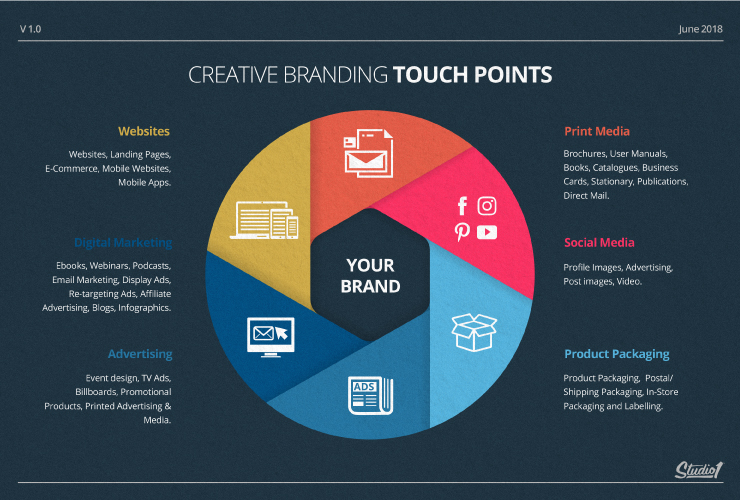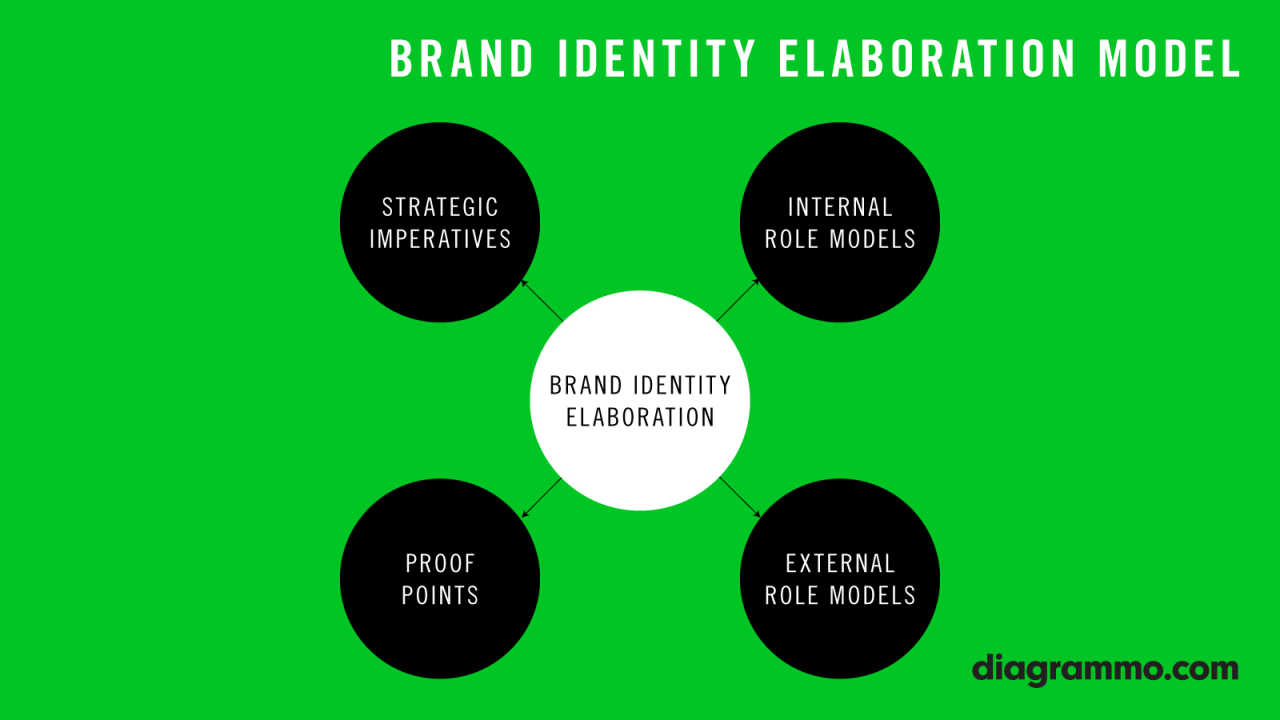Brand positioning strategy is crucial for business success. It’s not just about creating a logo; it’s about crafting a distinct identity and communicating a compelling value proposition that resonates with your target audience. This involves understanding your competitive landscape, defining your ideal customer, and developing a consistent brand message across all marketing channels. A well-defined brand positioning strategy ensures your brand stands out in a crowded marketplace, fostering loyalty and driving sustainable growth.
This guide will walk you through each stage of developing a robust brand positioning strategy, from defining your core values and conducting a competitive analysis to crafting compelling messaging and measuring your success. We’ll explore different positioning approaches, provide practical examples, and offer actionable steps to implement your strategy effectively.
Defining Brand Positioning

Brand positioning is the strategic process of establishing a unique and desirable place for your brand in the minds of your target consumers. It’s not just about what you *do*, but how you are *perceived* relative to your competitors. A strong brand position translates into increased customer loyalty, premium pricing potential, and a more resilient brand in the face of market fluctuations.
Successful brand positioning relies on several core components working in harmony. A clear understanding of your target audience is paramount. You need to know their needs, desires, pain points, and how they make purchasing decisions. Equally crucial is a compelling value proposition – a clear statement of the unique benefits your brand offers that resonate with your target audience and differentiate you from the competition. Finally, a consistent brand identity, encompassing visual elements (logo, color palette, typography) and brand messaging, reinforces your position and ensures a cohesive customer experience.
Brand Positioning Approaches
Different brands adopt different positioning strategies based on their target market and competitive landscape. A premium positioning strategy emphasizes high quality, exclusivity, and luxury, often commanding higher prices. Luxury car brands like Rolls-Royce exemplify this approach, focusing on craftsmanship, heritage, and a bespoke customer experience. In contrast, a value positioning strategy focuses on affordability and practicality, attracting price-sensitive consumers. Discount retailers like Aldi effectively leverage this strategy, offering a wide range of goods at significantly lower prices than competitors. Niche positioning targets a specific, well-defined segment of the market with specialized products or services. A company specializing in organic, vegan dog food would be an example of a niche positioning strategy, catering to a particular subset of pet owners.
Competitive Analysis in Brand Positioning
Conducting a thorough competitive analysis is fundamental to effective brand positioning. This involves identifying your key competitors, analyzing their strengths and weaknesses, understanding their target audiences, and evaluating their current market positions. Tools like SWOT analysis (Strengths, Weaknesses, Opportunities, Threats) can be invaluable in this process. For example, a new coffee shop might analyze existing competitors by assessing their pricing, menu offerings, location, customer reviews, and marketing strategies. This analysis would then inform the new coffee shop’s unique value proposition, target market, and overall brand positioning, allowing them to differentiate themselves effectively and avoid direct competition in saturated areas. A competitor map, visually charting competitors based on key attributes (e.g., price, quality, service), can also be a powerful tool to identify gaps in the market and potential opportunities for differentiation.
Target Audience Identification

Understanding your target audience is paramount to a successful brand positioning strategy. Without a clear picture of who you’re trying to reach, your marketing efforts will be scattered and ineffective. Identifying your ideal customer allows for focused messaging, efficient resource allocation, and ultimately, stronger brand resonance. This section will delve into the methods for identifying and profiling your target audience.
Identifying the key characteristics of your ideal customer profile requires a multifaceted approach. It’s not enough to simply define your audience based on broad demographics. A deep understanding of their needs, motivations, and pain points is crucial for creating a compelling brand narrative. This involves careful research and analysis, combining quantitative data with qualitative insights.
Key Characteristics of Ideal Customer Profiles
To effectively define your ideal customer profile, consider factors such as demographics (age, gender, location, income, education, occupation), psychographics (lifestyle, values, interests, attitudes, opinions), and behavioral characteristics (purchasing habits, brand loyalty, media consumption, online activity). For example, a luxury car brand might target high-income professionals aged 35-55 with a preference for sophisticated design and technological innovation. Conversely, a budget-friendly clothing retailer might focus on young adults aged 18-25 who are price-conscious and trend-driven. By analyzing these characteristics, you can build a detailed picture of your ideal customer.
Methods for Segmenting Target Audiences
Segmenting your target audience allows for more precise targeting of marketing efforts. This involves dividing your overall market into smaller, more homogeneous groups based on shared characteristics. Demographic segmentation uses readily available data such as age, gender, and location. Psychographic segmentation delves deeper, exploring values, lifestyle, and personality traits. Behavioral segmentation focuses on purchasing patterns, brand loyalty, and media consumption habits. For instance, a company selling fitness equipment might segment its audience based on fitness level (beginner, intermediate, advanced), preferred workout style (yoga, weightlifting, cardio), or purchase frequency. By using a combination of these segmentation methods, you can create highly targeted marketing campaigns.
Creating Detailed Buyer Personas
Buyer personas are semi-fictional representations of your ideal customers. They are based on research and data, and they bring your target audience to life. A well-developed buyer persona will include details such as their demographics, psychographics, goals, frustrations, and online behavior. For example, a persona for a sustainable fashion brand might be “Sarah,” a 28-year-old female marketing professional living in a major city, who is environmentally conscious, values ethical production, and actively seeks out sustainable brands on social media. Creating detailed buyer personas helps to guide your marketing and product development decisions, ensuring that your brand resonates with your target audience. These personas should be regularly reviewed and updated as your understanding of your customer base evolves.
Value Proposition Development: Brand Positioning Strategy

Crafting a compelling value proposition is crucial for differentiating your brand and resonating with your target audience. It’s more than just listing features; it’s about clearly communicating the unique benefits your brand offers and why customers should choose you over competitors. This section will explore the process of developing a strong value proposition, comparing different frameworks, and outlining effective communication strategies.
A well-defined value proposition answers the fundamental question: “Why should a customer choose your brand?” It should be concise, memorable, and highlight the specific problem your brand solves and the unique value it provides. This goes beyond simply stating what your product or service *is*; it focuses on what it *does* for the customer and why that’s better than the alternatives.
Value Proposition Frameworks
Several frameworks can assist in developing a robust value proposition. Understanding the nuances of each can help you tailor your approach to best suit your brand and target market. Choosing the right framework depends on your brand’s complexity, the nature of your offering, and your target audience’s needs.
- The Problem/Solution Framework: This focuses on identifying a specific customer problem and presenting your brand as the solution. For example, a company selling noise-canceling headphones might position itself as the solution to the problem of disruptive noise in busy environments, allowing customers to focus and relax.
- The Features/Benefits Framework: This approach lists key features and then explains the corresponding benefits for the customer. For instance, a car manufacturer might highlight features like all-wheel drive (feature) and explain its benefit as enhanced safety and control in challenging weather conditions (benefit).
- The Value-Based Framework: This emphasizes the overall value your brand delivers, focusing on the long-term impact and return on investment for the customer. A software company might position its product as a solution that increases efficiency, reduces operational costs, and improves overall productivity, thereby justifying its price.
Communicating Your Value Proposition
Effectively communicating your value proposition across various marketing channels is paramount. A consistent message is key to building brand recognition and trust.
Different channels require different approaches. For example, a concise and impactful tagline might be ideal for social media, while a more detailed explanation might be necessary on your website. Consider these strategies:
- Website: Your website should clearly articulate your value proposition on the homepage and throughout relevant pages. Use compelling visuals and concise language.
- Social Media: Craft short, engaging messages that highlight key benefits and use visuals to capture attention. Run targeted ads to reach specific segments of your audience.
- Advertising: Develop ads that focus on the key benefits and address the specific needs of your target audience. Use strong calls to action to encourage engagement.
- Public Relations: Highlight your value proposition in press releases and media outreach. Focus on stories that demonstrate the positive impact your brand has on customers.
Brand Messaging and Communication

Crafting compelling brand messages is crucial for connecting with your target audience and solidifying your brand’s position in the market. Effective communication translates your brand’s value proposition into a language that resonates emotionally and intellectually, driving engagement and loyalty. This involves defining a consistent brand voice and tone, and leveraging the power of storytelling to forge meaningful connections.
Effective brand messaging goes beyond simply stating what your product or service does; it’s about conveying the feeling and experience associated with your brand. This requires a deep understanding of your target audience’s needs, aspirations, and pain points, ensuring your messages directly address their concerns and desires. Consistent messaging across all platforms maintains brand integrity and builds recognition, while storytelling helps humanize your brand and build trust.
Key Brand Messages
Developing key brand messages requires a strategic approach. These messages should be concise, memorable, and directly reflect the core values and unique selling points of your brand. They should also be adaptable to various communication channels, ensuring consistency while maintaining relevance to the specific platform. For example, a message focused on sustainability might be tailored for a social media post highlighting eco-friendly practices, while a website banner might emphasize the long-term benefits for the customer.
Brand Voice and Tone
Maintaining a consistent brand voice and tone is paramount for building brand recognition and trust. Your brand voice is the personality of your brand—is it playful, sophisticated, authoritative, or friendly? Your tone reflects the specific context of the message—formal or informal, serious or humorous. Consider the tone used by brands like Dove (empowering and authentic) versus Nike (motivational and energetic). Defining and adhering to a style guide ensures consistent messaging across all platforms, reinforcing brand identity and preventing conflicting messages.
Storytelling for Emotional Connection
Storytelling is a powerful tool for building emotional connections with your audience. By sharing authentic narratives that resonate with your target audience’s values and experiences, you can create a deeper level of engagement and foster a sense of community around your brand. Consider crafting stories that showcase customer testimonials, highlight brand origins, or illustrate the positive impact of your product or service. For example, a company selling ethically sourced coffee might share the story of the farmers who grow their beans, highlighting the positive social and environmental impact of their business. This approach moves beyond simple product descriptions and creates a more memorable and impactful brand experience.
Brand Identity and Visual Elements

Crafting a compelling brand identity goes beyond a catchy slogan; it’s about creating a visual language that resonates deeply with your target audience and reinforces your brand’s personality. This visual language, encompassing color palettes, typography, imagery, and overall aesthetic, is crucial for consistent brand recognition and effective communication. A well-defined visual identity ensures that your brand stands out in a crowded marketplace and fosters a strong connection with consumers.
A strong visual identity system provides a cohesive and memorable brand experience across all touchpoints. This consistency is vital for building brand equity and trust. It ensures that your message remains clear and impactful, regardless of the platform or medium. Furthermore, a well-defined visual identity streamlines marketing efforts, saving time and resources while maximizing impact.
Mood Board: Visual Aspects of a Hypothetical “EcoBloom” Brand
Imagine a mood board for “EcoBloom,” a sustainable skincare brand. The overall aesthetic aims for a feeling of natural elegance and calming serenity.
The color palette centers around soft greens (think fresh spring leaves), earthy browns (representing natural ingredients), and creamy off-whites (suggesting purity and simplicity). Accents of a muted coral are used sparingly to add a touch of warmth and vibrancy. The greens evoke feelings of nature and freshness, reinforcing the brand’s commitment to sustainability. The browns add a sense of grounding and authenticity, hinting at the natural origin of the products. The off-whites create a sense of purity and cleanliness, conveying the brand’s focus on high-quality, natural ingredients. The coral accents provide a subtle pop of color, making the brand feel approachable and inviting.
The typography features a combination of a clean, modern sans-serif font (like Montserrat) for body text and headings, conveying professionalism and readability, and a slightly more delicate script font (similar to Playfair Display) for logo and subheadings, adding a touch of elegance and sophistication. The sans-serif font ensures easy readability across all platforms, while the script font adds a touch of personality and visual interest.
Imagery includes close-up shots of lush green plants, blooming flowers, and smooth, textured natural materials like wood and stone. These images evoke a sense of natural beauty and purity, aligning with the brand’s values. They aim to create a calming and aesthetically pleasing visual experience, reinforcing the brand’s focus on natural ingredients and sustainable practices.
Brand Style Guide: Consistent Application of Visual Elements
The EcoBloom brand style guide would meticulously document all aspects of the brand’s visual identity, ensuring consistent application across all marketing materials. This would include detailed specifications for:
* Logo Usage: Clear guidelines on logo size, placement, minimum clear space, and acceptable variations.
* Color Palette: Precise Pantone or HEX codes for all brand colors, ensuring consistent color reproduction across different mediums.
* Typography: Detailed specifications for font families, sizes, weights, and spacing, ensuring readability and visual consistency.
* Imagery: Guidelines on photography style, image quality, and preferred image subjects, maintaining a cohesive visual narrative.
* Graphic Elements: Specifications for any custom illustrations, patterns, or icons, ensuring brand consistency.
Examples of Brands with Strong Visual Identities
Apple’s minimalist aesthetic, characterized by clean lines, simple typography, and a consistent use of white space, fosters a sense of sophistication and user-friendliness. Their iconic logo is instantly recognizable globally.
Starbucks’ use of a distinctive green color and siren logo immediately evokes feelings of warmth, comfort, and community. The logo’s consistent use across all platforms ensures brand recognition and fosters a strong connection with consumers.
Marketing Channels and Strategies
Selecting the right marketing channels is crucial for reaching your target audience effectively and efficiently. A well-defined strategy considers the audience’s preferences, the brand’s message, and the available budget. This section Artikels the process of identifying and prioritizing channels, creating a marketing plan, and providing examples of successful integrated campaigns.
A successful marketing strategy doesn’t rely on a single channel; instead, it leverages a mix to maximize reach and impact. The optimal combination depends heavily on the target audience’s online and offline behavior and the brand’s resources. Understanding these factors allows for the creation of a cohesive and effective marketing plan.
A strong brand positioning strategy requires understanding your target audience’s needs. For instance, if you’re targeting health-conscious individuals, consider incorporating information about healthy lifestyle choices, such as referencing a helpful guide on selecting low-impact exercises: Panduan memilih olahraga ringan. This alignment with their interests strengthens your brand’s relevance and resonates more effectively, ultimately improving your overall brand positioning.
Effective Marketing Channels for Target Audience Reach, Brand positioning strategy
Identifying the most effective marketing channels requires a deep understanding of the target audience’s demographics, psychographics, and media consumption habits. For example, a younger demographic might be heavily engaged on platforms like TikTok and Instagram, while an older demographic might prefer traditional media like television or print advertising. Detailed market research, including surveys and focus groups, can provide valuable insights. Analyzing competitor strategies and studying industry benchmarks can also inform channel selection.
Marketing Plan Artikel
A comprehensive marketing plan should detail the strategies for each selected channel. This includes setting specific, measurable, achievable, relevant, and time-bound (SMART) goals for each channel. For example, a goal for social media marketing might be to increase brand awareness by 20% within six months, measurable through follower growth and engagement metrics. The plan should also Artikel the budget allocation for each channel, the key performance indicators (KPIs) to track progress, and the methods for measuring the return on investment (ROI). Regular monitoring and adjustments based on performance data are essential.
Examples of Successful Integrated Marketing Campaigns
Integrated marketing campaigns combine various channels to create a cohesive and impactful brand experience. A successful example is Dove’s “Real Beauty” campaign, which utilized print, television, and digital channels to promote body positivity and challenge unrealistic beauty standards. The campaign’s consistent messaging across channels resonated with the target audience and generated significant positive media coverage and brand loyalty. Another example is Nike’s “Just Do It” campaign, which has spanned decades and utilized various channels, including sponsorship of athletes and events, social media engagement, and television advertising. The campaign’s enduring success highlights the importance of consistent branding and a strong, relatable message.
Measuring and Evaluating Success
A robust system for tracking and analyzing key performance indicators (KPIs) is crucial for determining the effectiveness of your brand positioning strategy. By consistently monitoring relevant metrics and adapting your approach based on the data, you can ensure your brand remains resonant and competitive. This involves establishing clear targets, selecting appropriate measurement methods, and understanding how to interpret the results to inform strategic adjustments.
Successful brand positioning isn’t a one-time event; it’s an ongoing process of refinement and optimization. Regular evaluation allows for proactive adjustments, preventing costly mistakes and maximizing return on investment. The following sections Artikel a framework for designing a KPI tracking system, analyzing data, and adapting your strategy for optimal performance.
KPI Tracking System Design
A well-designed KPI tracking system should align directly with your brand positioning objectives. It needs to capture data reflecting your target audience’s perception of your brand and its value proposition. This data should be regularly collected and analyzed to identify trends and areas for improvement. Consider the specific metrics that are most relevant to your brand’s goals and resources.
Data Analysis for Brand Positioning Effectiveness
Analyzing data gathered from your KPI tracking system provides insights into the effectiveness of your brand positioning. This involves comparing your actual performance against your predetermined targets, identifying any discrepancies, and exploring potential causes. Sophisticated data analysis techniques, such as trend analysis and regression analysis, can reveal deeper insights into the relationship between your brand positioning efforts and key business outcomes. For example, a correlation analysis might reveal a strong link between improved brand awareness and increased sales.
Strategy Adaptation Based on Performance Data
The ability to adapt your brand positioning strategy based on performance data is vital for long-term success. Regularly reviewing your KPIs and analyzing the underlying data allows you to identify areas needing improvement and make informed decisions about adjustments to your messaging, marketing channels, or even your core value proposition. For instance, if customer feedback indicates a disconnect between your perceived brand personality and your target audience’s preferences, you might need to refine your brand messaging or visual identity.
KPI Examples
| KPI | Measurement Method | Target Value | Data Source |
|---|---|---|---|
| Brand Awareness | Surveys, Social Media Mentions, Website Traffic | Increase brand awareness by 20% within 6 months | Market research, social listening tools, Google Analytics |
| Customer Satisfaction | Customer surveys (CSAT, NPS), Feedback forms | Maintain a Net Promoter Score (NPS) above 70 | Customer relationship management (CRM) system, survey platforms |
| Website Conversion Rate | Website analytics (e.g., Google Analytics) | Increase conversion rate by 15% within 3 months | Google Analytics, other web analytics platforms |
| Social Media Engagement | Social media analytics (e.g., Facebook Insights, Twitter Analytics) | Increase engagement rate (likes, shares, comments) by 25% within 6 months | Social media management tools, platform-specific analytics dashboards |
Outcome Summary
Ultimately, a successful brand positioning strategy is a dynamic process, requiring ongoing monitoring, analysis, and adaptation. By consistently evaluating your KPIs and responding to market changes, you can ensure your brand remains relevant, competitive, and resonates with your target audience. Remember, clear communication, consistent messaging, and a deep understanding of your customer are the cornerstones of a powerful brand position that drives lasting success.
A successful brand positioning strategy hinges on understanding your target audience and their needs. For example, consider how a virtual table tennis game, like the one offered at Permainan tenis meja virtual , might position itself as a fun, accessible, and competitive option for casual gamers. This clear positioning helps attract the right customer base and builds brand recognition, a crucial element of any effective strategy.